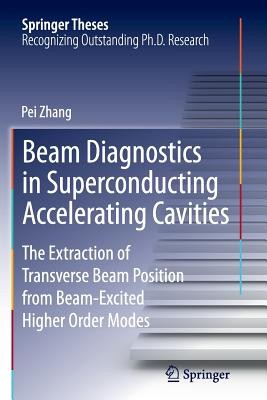
- We will send in 10–14 business days.
- SAVE -10% with code: EXTRA
Beam Diagnostics in Superconducting Accelerating Cavities (e-book) (used book) | bookbook.eu
Reviews
Description
An energetic charged particle beam introduced to an rf cavity excites a wakefield therein. This wakefield can be decomposed into a series of higher order modes and multipoles, which for sufficiently small beam offsets are dominated by the dipole component. This work focuses on using these dipole modes to detect the beam position in third harmonic superconducting S-band cavities for light source applications. A rigorous examination of several means of analysing the beam position based on signals radiated to higher order modes ports is presented. Experimental results indicate a position resolution, based on this technique, of 20 microns over a complete module of 4 cavities. Methods are also indicated for improving the resolution and for applying this method to other cavity configurations. This work is distinguished by its clarity and potential for application to several other international facilities. The material is presented in a didactic style and is recommended both for students new to the field, and for scientists well-versed in the field of rf diagnostics.
EXTRA 10 % discount with code: EXTRA
The promotion ends in 21d.00:03:46
The discount code is valid when purchasing from 10 €. Discounts do not stack.
- Author: Pei Zhang
- Publisher: Springer
- ISBN-10: 3319346164
- ISBN-13: 9783319346168
- Format: 15.6 x 23.4 x 0.7 cm, softcover
- Language: English English
An energetic charged particle beam introduced to an rf cavity excites a wakefield therein. This wakefield can be decomposed into a series of higher order modes and multipoles, which for sufficiently small beam offsets are dominated by the dipole component. This work focuses on using these dipole modes to detect the beam position in third harmonic superconducting S-band cavities for light source applications. A rigorous examination of several means of analysing the beam position based on signals radiated to higher order modes ports is presented. Experimental results indicate a position resolution, based on this technique, of 20 microns over a complete module of 4 cavities. Methods are also indicated for improving the resolution and for applying this method to other cavity configurations. This work is distinguished by its clarity and potential for application to several other international facilities. The material is presented in a didactic style and is recommended both for students new to the field, and for scientists well-versed in the field of rf diagnostics.


Reviews